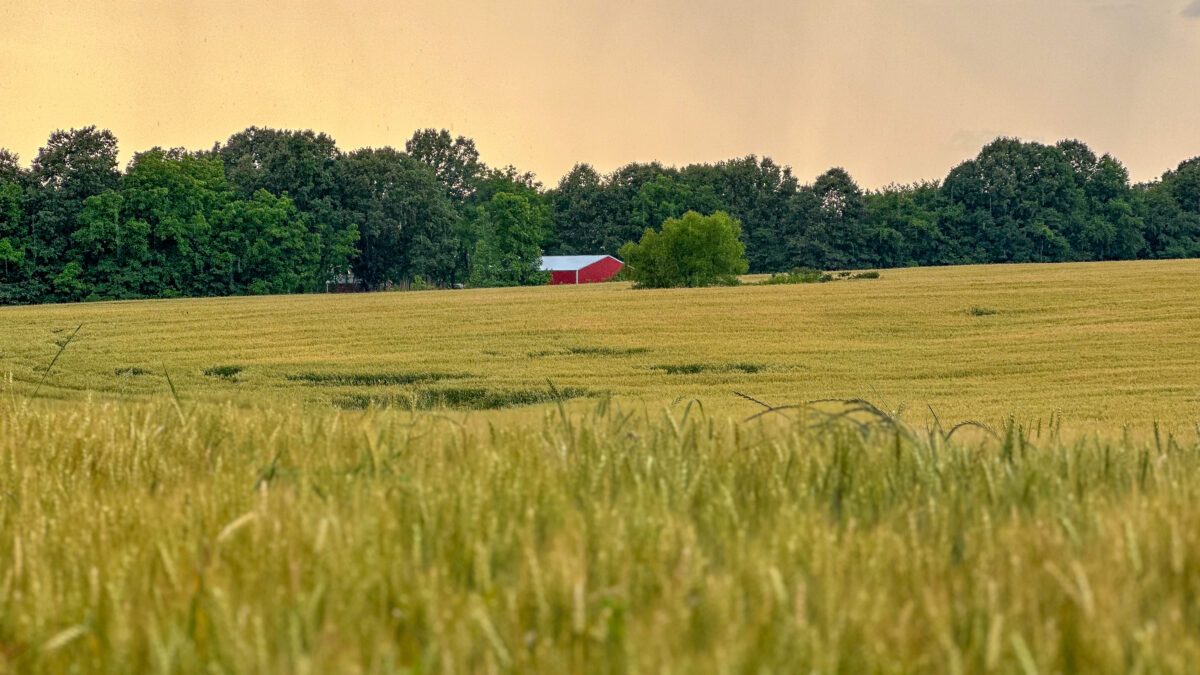You Can’t Kill Wheat, But Mother Nature is Trying

photo credit: AFBF Photo, Morgan Walker
John Newton, Ph.D.
Chief Economist
The old adage is that “you can’t kill wheat.” Mother Nature may be testing that hypothesis in parts of the U.S. The National Weather Service indicates that heavy snow and freezing occurred over the last week in key winter wheat production areas - eastern Colorado, the western part of Kansas and parts of Nebraska. This adverse weather resulted in damage to the wheat crop, including substantial lodging, or the flattening of the wheat plant.
Lodging can reduce crop yields as much as 1 percent per day and may increase the likelihood of disease. Reports of lower wheat yields are already being confirmed by crop tours currently underway. Ultimately, this recent damage to the crop could further reduce wheat production in 2017/18, lowering ending stock levels and lifting marketing year average prices above the current projection of $4.30 per bushel. New-crop wheat futures climbed as much as 20 cents per bushel following the prior week’s weather events.
A share of the wheat crop was already in poor condition. USDA’s May 1, 2017, Crop Progress report revealed that 13 percent of the winter wheat crop was in poor or very poor condition as of April 30, 2017, unchanged from last week, but 6 percent higher than the prior year level. Crop conditions are much worse in portions of the U.S hit hardest by the winter storm. For example, from Texas to South Dakota, portions of the winter wheat crops in poor or very poor conditions is as high as 24 percent, Figure 1. These conditions could worsen in the coming weeks as the impacts of the recent blizzard are captured by USDA crop progress reports.

On an acreage basis, the 13 percent poor-or-very-poor rating is equivalent to 4.3 million winter wheat acres. More acres are likely to be in poor or very poor conditions in the weeks ahead. The areas hit hardest by the blizzard had substantial amounts of wheat acreage in poor or very poor conditions already. Based on the Crop Progress report, more than 3 million acres in Colorado, Kansas, Oklahoma and Texas were in poor or very poor condition at the end of April, Figure 2. These 3 million acres represent approximately 70 percent of the winter wheat acreage in poor or very poor condition.
For the 2017 crop year, USDA Risk Management Agency reveals that 23 million wheat acres are covered under a crop insurance policy. More than 20 million of these acres are covered under a revenue-based crop insurance policy. Revenue policies indemnify a grower when the actual revenue falls below the policy guarantee. These indemnities can help growers offset financial losses due to unanticipated declines in crop yields or prices.

At this point the full extent of the damage to the wheat crop is unknown. On May 10, 2017, USDA will release the much-anticipated Crop Production report, providing the first estimate of wheat production and yields for the 2017/18 marketing year. This report is likely to consider the impact recent weather conditions may have had on wheat yields and total production.
Whatever those results, this damage to the wheat crop comes on top of the fact that USDA’s January 12, 2017, Winter Wheat and Canola Seedings report revealed that for the fourth consecutive year U.S. farmers had reduced acres planted to winter wheat. Total winter wheat acreage planted for 2017 harvest was announced at 32.4 million acres, down 10 percent, or 3.8 million acres, from 2016. Winter wheat seedings in 2017 were at the lowest level in over a century.
For the 2016/17 marketing year, U.S. wheat yields were record-high at 52.6 bushels per acre and wheat production climbed by 12 percent last year. Now, with winter wheat acreage at the lowest level in nearly a century, forecasts are for total wheat production to fall significantly for the 2017/18 marketing year. USDA’s February 24, 2017, Grain and Oilseeds Outlook projected average wheat yields in 2017/18 to fall by approximately 10 percent, and total production to fall 20 percent to 1.837 billion bushels. However, as presented in this article, recent crop damage is likely to further reduce the size of the 2017/18 crop.